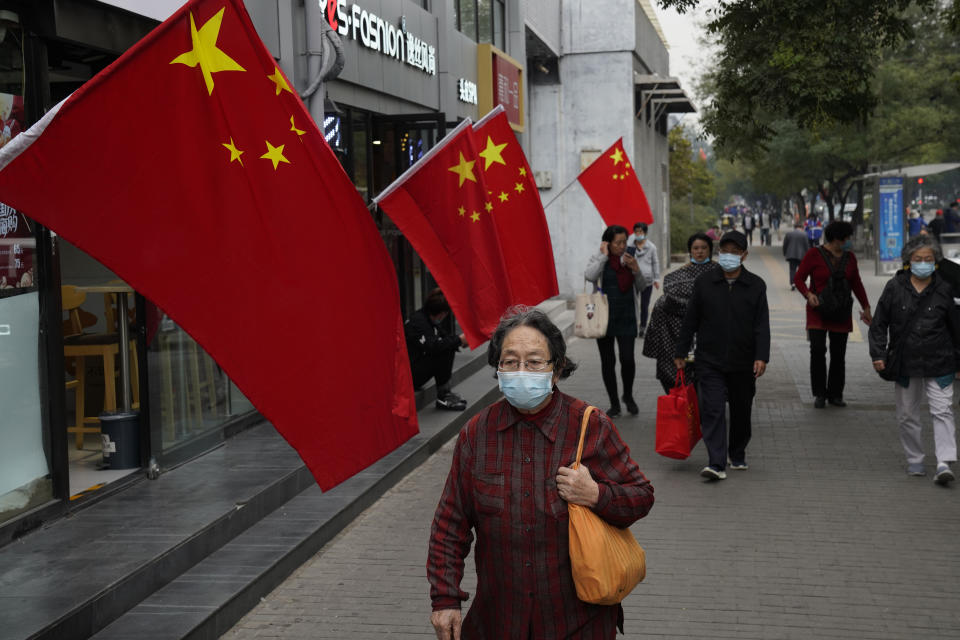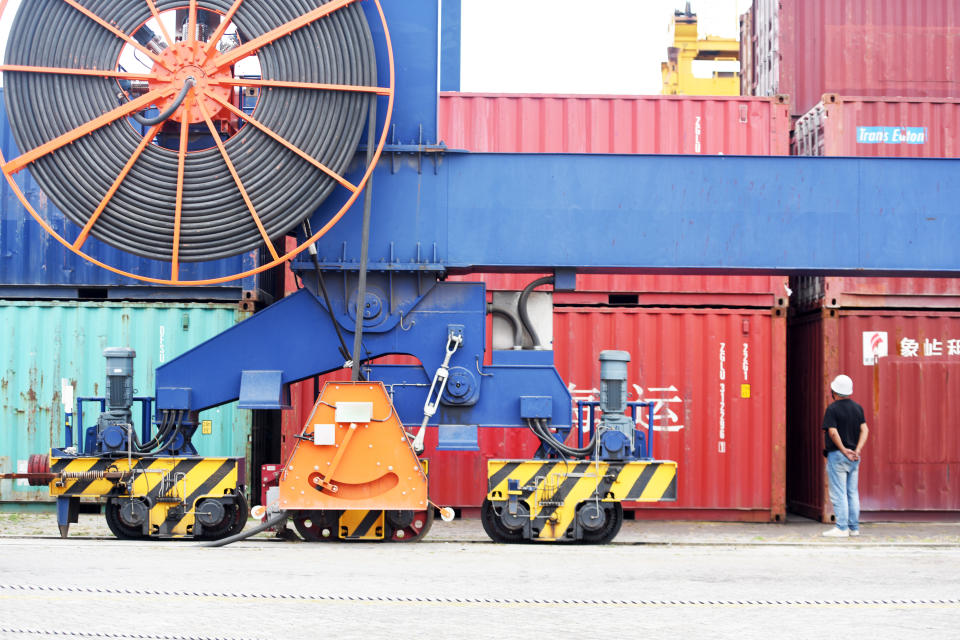Trump fails his own test on trade
As a presidential candidate in 2016, Donald Trump railed against the U.S. trade deficit with the rest of the world, and with China and Mexico in particular. “Biggest trade deficit in many years!” he tweeted in June of 2016. “I will fix it.”
He hasn’t. “Has he lost the battle with the trade deficit? The numbers say yes, absolutely,” Chris Rogers of research firm Panjiva says in the latest episode of the Yahoo Finance Electionomics podcast. “Exports to China actually went down before they came back up. The fact that he's gone to war with other countries and regions in trade has meant they've put tariffs on. So that's cut exports.”
Trump began imposing tariffs on imports from China and many other countries in 2018, with predictable consequences: Most of those countries retaliated with their own tariffs on imports from the United States. Trump has now slapped tariffs on about $355 billion worth of imports, with tariffs ranging from 7.5% to 25%. The American Action Forum estimates the higher cost of tariffs—which are a tax—along with lost efficiency totals around $57 billion per year. That’s not huge in a $20 trillion economy, but it depresses growth slightly rather than boosting it.
As for the trade deficit Trump promised to “fix,” here are the numbers: The total U.S. trade deficit in 2016, including both goods and services, was $481 billion. The trade deficit for the last 12 months, through August, was $599 billion, or 25% larger than the year before Trump took office.
[Check out other episodes of the Electionomics podcast.]
The coronavirus pandemic that exploded early this year has depressed trade, so it’s worth looking at the numbers before the virus struck. The trade deficit in 2019 was $576 billion, essentially the same as during the latest 12-month period. The deficit for the 12-month period ending in February, before the virus exploded in the United States, was $560 billion. There’s no way to slice the numbers in Trump’s favor.
Most economists say there’s little point focusing on the aggregate trade deficit, because there’s nothing inherently wrong with importing more than we export. It’s more important to have a robust manufacturing sector building high-value products, along with a sophisticated service sector and strong purchasing power for U.S. consumers. Yet Trump has focused relentlessly on the trade deficit, and he’s now failing by his own metrics.
Little progress from China

Trump’s “phase one” trade deal with China, inked in January, is supposed to boost Chinese purchases of American products about $200 billion per year above 2017 levels. So far, China is well behind its promised pace of purchases. Chinese purchases of U.S. farm products have picked up, but energy purchases are lagging, in part because consumption is down everywhere on account of the pandemic. The biggest shortfall is in manufactured products such as cars, planes, machinery and pharmaceuticals. “We’re still not back to where we were in 2017,” says Rogers, “never mind the sunny uplands of a $200 billion increase.”
Both sides reviewed the January deal at the six-month mark in August, and there were no changes, indicating at least grudging acceptance of the progress so far. There was supposed to be a “phase two” deal with China leading to even more purchases of U.S. goods, but Trump has indicated that may not happen. Plus Trump’s entire trade agenda obviously depends on whether he gets reelected, and he’s behind Democratic contender Joe Biden in the polls.
Trump also pledged to use tariffs and other tools to bring back manufacturing jobs to the United States, but there’s no evidence that happened. Before the pandemic struck, manufacturing employment in the United States had increased under Trump at about the same pace as during the last four years of the Obama administration. There was actually a slight drop in manufacturing output in 2019—technically characterized as a recession in the sector—with employment flattening out. And since the virus erupted this year, manufacturing employment has plummeted.
Instead of moving low-cost manufacturing back to the high-cost United States, some manufacturers moved production from China to other developing countries not subject to new Trump tariffs. The amount of goods imported to the United States from Vietnam, for instance, is 14% higher this year than last, despite the overall slowdown in trade and spending. The Trump administration is now mounting an investigation of trade with Vietnam similar to probes of China and other countries it conducted before imposing tariffs.

Trump can point to a couple small wins on trade, including the update of the old NAFTA trade deal, now called the U.S. Mexico Canada Agreement, or the USMCA. “NAFTA did need updating,” Rogers says. “It was written in the mid-90s, when the Internet wasn't a thing.”
While Trump’s use of tariffs hasn’t really worked, many trade experts do credit him with focusing needed attention on China’s trade abuses. “Right objective, wrong route,” Rogers says. If Biden beats Trump in November, there’s a good chance he’ll keep the Trump tariffs in place, at least for a while, as leverage for his own trade negotiations with China. Instead of battling China alone, as Trump has done, Biden would likely enlist allies in a multilateral effort to rebalance trade with China. It’s not what Trump set out to do, yet he may influence U.S. relations with China well into the future.
Rick Newman is the author of four books, including “Rebounders: How Winners Pivot from Setback to Success.” Follow him on Twitter: @rickjnewman. Confidential tip line: rickjnewman@yahoo.com. Encrypted communication available. Click here to get Rick’s stories by email.
Read more:
Get the latest financial and business news from Yahoo Finance
Follow Yahoo Finance on Twitter, Facebook, Instagram, Flipboard, SmartNews, LinkedIn, YouTube, and reddit.



